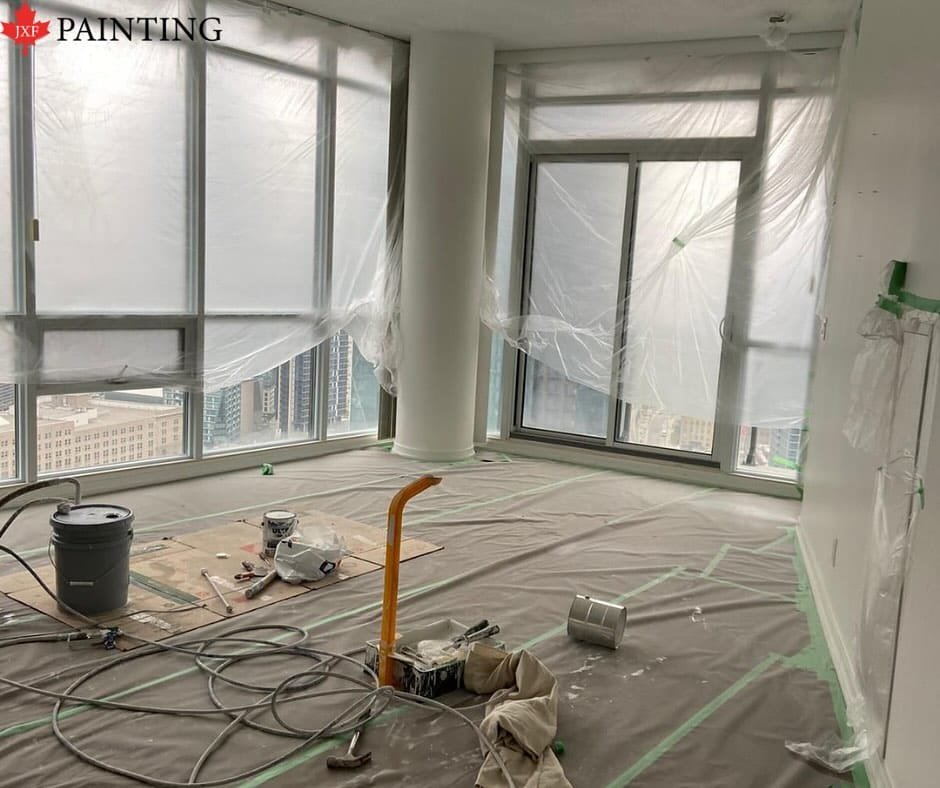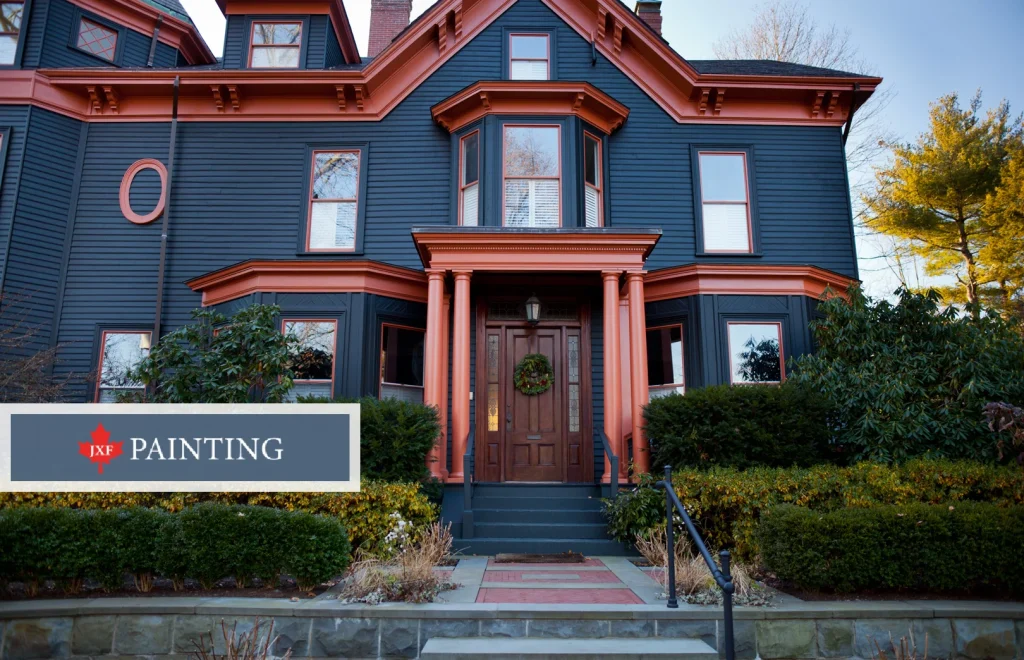Deciding to paint the exterior of your house is a significant investment that not only enhances its aesthetic appeal but also serves as a protective shield against the elements. However, the success of this exterior makeover largely depends on one critical factor: outdoor painting temperatures. In North York, where the climate can vary dramatically across seasons, selecting the optimal time for this task can make all the difference in the durability and finish of your paint job. Understanding the right conditions is crucial for homeowners looking to maximize their investment and achieve the best possible results.
This article delves into the specific weather conditions ideal for painting your house exterior in North York, highlighting the best seasons for this project for optimal adhesion and long-lasting beauty. It will also provide practical tips for painting your home in different seasons, ensuring you can confidently plan your renovation. From the preparation stage to the final touch-up, understanding the impact of outdoor painting temperatures will guide you in ensuring that your house looks its best and is protected throughout the year.
Understanding Weather Conditions for Exterior Painting
Temperature Considerations
- Optimal Temperature Range: Maintaining the right temperature is crucial for exterior painting. Ideally, temperatures should range between 50-85°F. Extreme temperatures, either too hot or cold, can lead to poor paint application and durability issues.
- Effects of Extreme Temperatures: In very hot conditions, paint can dry too quickly, preventing proper adhesion and leading to peeling and cracking. Conversely, in cold weather, paint thickens, making it difficult to apply smoothly and extending drying times.
Impact of Humidity
- Moisture and Adhesion: High humidity can prolong the drying process, allowing the paint’s moisture to evaporate for longer. This can compromise the paint’s adhesion to surfaces and reduce its lifespan.
- Ideal Humidity Levels: Aim for a day with humidity between 40% and 70% to ensure optimal drying times and paint job quality.
Predicting Weather Changes
- Weather Forecasting: Check the local weather forecast before beginning an exterior painting project. Avoid painting on days when rain or high winds are expected, as these can affect the paint’s ability to dry and adhere properly.
- Seasonal Considerations: In regions like North York, spring and fall transitional seasons are often ideal for painting due to mild temperatures and lower likelihood of extreme weather conditions.
Best Seasons to Paint House Exterior in North York
Spring
- Ideal Temperatures for Painting: Spring perfectly balances temperatures between 60° and 90° Fahrenheit, making it ideal for exterior painting. This moderate climate prevents the paint from drying too quickly or slowly, ensuring optimal adhesion and durability.
- Reduced Weather Disruptions: The steady weather conditions in spring minimize the chances of unexpected weather changes disrupting the painting process. This stability allows for better planning and execution of exterior painting projects.
Summer
- Challenges of High Heat: Summer months often bring intense heat, which can cause paint to dry unevenly and quickly, leading to potential peeling and cracking. It is advisable to avoid painting during peak heat hours.
- Extended Daylight Hours: The longer summer days provide more daylight, facilitating longer working hours. However, painting tasks should be scheduled during cooler parts of the day to avoid the direct impact of the sun.
Fall
- Optimal Conditions for Drying: Fall typically features lower humidity levels and mild temperatures, conducive to paint drying and curing properly. The cooler weather also makes it comfortable for painters to work for extended periods.
- Preparation for Winter: Painting in the fall allows for addressing any maintenance issues before the harsh winter conditions, ensuring that the paint is a protective barrier against cold and moisture.
Winter
- Colder Temperature Paints: While winter is generally not ideal due to low temperatures, advancements in paint technology have introduced products that can be applied in conditions as low as 35 degrees Fahrenheit. However, these conditions still require careful monitoring to ensure proper curing.
- Limited Painting Opportunities: Winter is less favourable due to shorter days and potential precipitation. Painting during this season needs to be meticulously planned around weather forecasts to avoid moisture-related issues with the paint.
By choosing the right season for exterior painting in North York, homeowners can enhance the effectiveness and longevity of their paint job, ensuring both aesthetic appeal and protection for their property.
Practical Tips for Painting Your Home in Different Seasons
Spring Painting Tips
- Optimal Weather Conditions: Spring offers the best climate for exterior painting due to its mild temperatures. This season ensures that latex-based paints achieve their maximum durability.
- Preparation is Key: Preparing the exterior by repairing any damaged wood before painting is crucial. Spring provides the ideal temperatures for these repairs.
- Manage Humidity: Aim for days with humidity levels between 40% and 70% to avoid moisture issues on newly painted surfaces.
Summer Painting Tips
- Avoid Extreme Heat: Paint during cooler times of the day to prevent quick drying and uneven application.
- Wind and Debris: Choose days with minimal wind to keep dust and debris from sticking to wet paint.
- Monitor Weather Closely: Ensure there are no rain forecasts that could affect the paint’s adhesion.
Fall Painting Tips
- Ideal Drying Conditions: Fall is excellent for painting. It provides comfortable outdoor and indoor work conditions with cooler temperatures and clear skies.
- Less Disruption: Fewer people are likely to be around your home, offering more privacy and less noise during the painting process.
- Efficient Timing: Try to complete your painting project early in the season before it gets too cold.
Winter Painting Tips
- Use Suitable Paint: Opt for winter-grade paint that can be applied in lower temperatures.
- Proper Application: Apply two thin coats rather than one thick coat to enhance durability and ensure better adhesion.
- Ventilation and Heating: When painting indoors, ensure adequate ventilation while maintaining a warm environment to aid drying.
Conclusion
Throughout this article, we have explored the pivotal role of outdoor painting temperatures in the longevity and effectiveness of a house’s exterior paint job in North York. We’ve underscored the significance of choosing the right season—weighing factors such as temperature, humidity, and weather disruptions—to ensure optimal adhesion, durability, and aesthetic appeal. Through a meticulous examination of each season’s unique conditions, alongside practical painting tips, homeowners are equipped with the knowledge to make informed decisions about when to embark on their painting projects for results that are not only visually pleasing but enduring.
The discussion further illuminates the broader implications of weather on exterior painting practices, emphasizing the importance of preparation, the choice of materials, and the adherence to recommended weather conditions. By aligning their painting projects with the seasons and conditions best suited for exterior painting, homeowners in North York can enhance both the protective qualities and the beauty of their properties. This approach not only maximizes the investment in their homes but also contributes to the longevity and resilience of their exterior surfaces against the diverse and sometimes harsh Canadian climate, ensuring a radiant and well-preserved exterior for years to come.
FAQs
What is the optimal temperature range for exterior painting?
To achieve the best results when painting the exterior of your house, aim for a day when the temperature is between 60°F and 85°F. It’s also advisable to paint on a day with minimal wind to prevent the paint from drying too quickly. The ideal humidity level for exterior painting should be between 40% and 70% to ensure proper paint drying.
At what temperatures should you paint outside in Canada?
In Canada, the optimal temperature range for painting outdoors is between 1.7°C (35°F) and 37.8°C (100°F). Because outdoor temperatures can fluctuate more significantly, selecting a day for painting when the temperature falls within this range, and the humidity is as low as possible to minimize issues is important.
What are the consequences of painting in temperatures below 10 degrees?
Painting below 10 degrees can have several detrimental effects on the paint and its application. Alkyd and oil-based paints tend to thicken, making them more difficult to apply smoothly. Water-based paints, also known as latex paints, are at risk of freezing at these lower temperatures, which can compromise the quality of the finish.
Contact Us
Phone: (647) 889-7967
Email: info@jxfpaintingservice.ca




